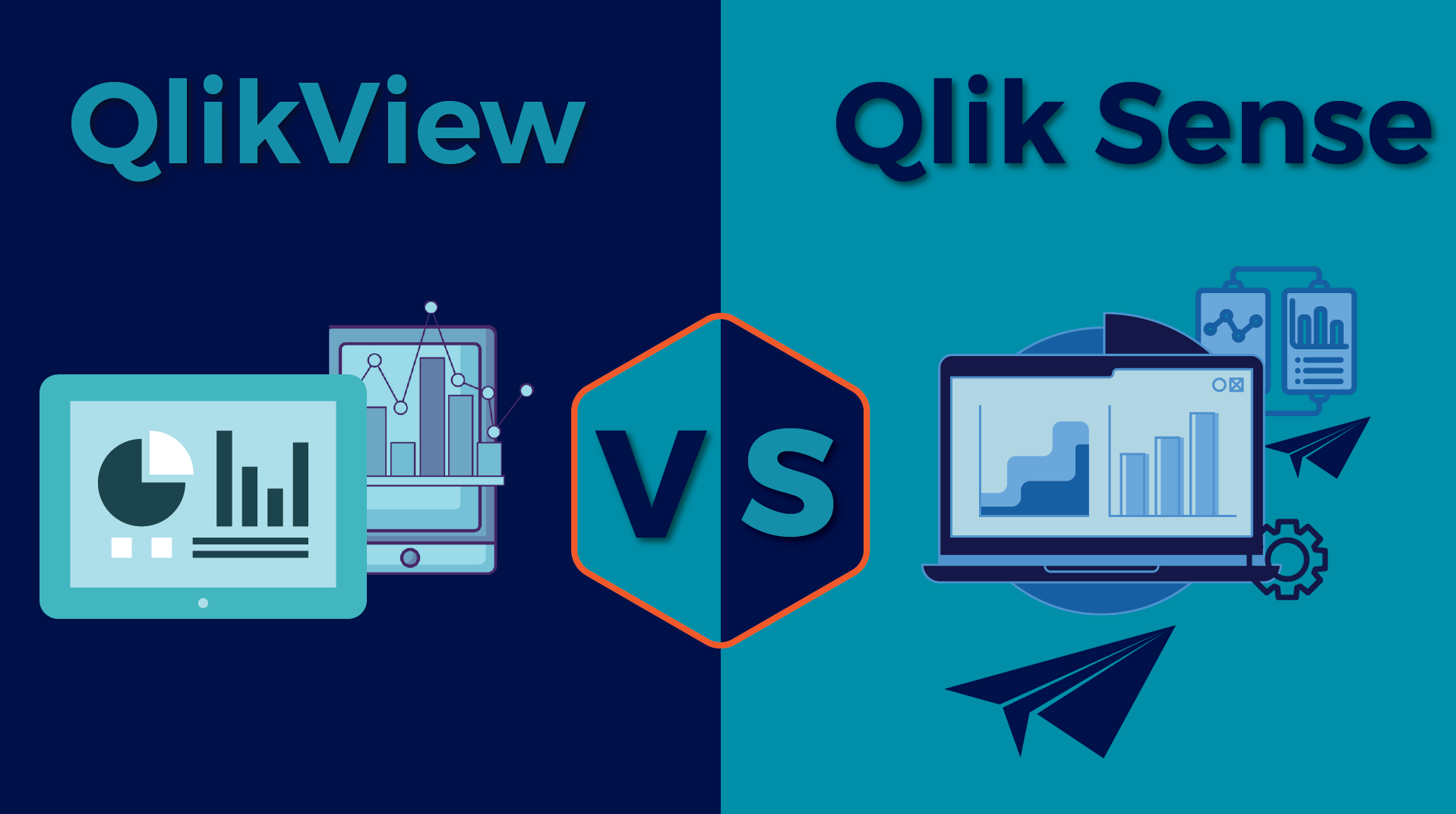Comparing Qlik Sense and Qlik View: Choosing the Right Data Analytics Platform
Qlik, a prominent player in the data analytics realm, offers two flagship products: Qlik Sense and Qlik View. While both platforms are designed to enable data-driven decision making, they have distinct features and functionalities that set them apart. In this blog post, we will compare Qlik Sense and Qlik View, exploring their key differences and helping you understand which platform might be the best fit for your organization’s data analytics needs.
User Interface and Data Visualization
Qlik Sense is renowned for its intuitive and user-friendly interface. It provides a modern, drag-and-drop user experience, allowing users of all skill levels to effortlessly create interactive visualizations and dashboards. On the other hand, Qlik View offers a more traditional, script-based approach, which may require some technical expertise to develop complex visualizations. Qlik Sense’s interface empowers users with greater flexibility and ease of use in exploring and analyzing data.
Self-Service Analytics
Qlik Sense excels in the realm of self-service analytics. It enables business users to independently explore and visualize data, offering a guided and intuitive experience that promotes self-sufficiency. Qlik Sense’s self-service capabilities empower users to ask ad hoc questions, create personalized dashboards, and perform data discovery without heavy reliance on IT or technical resources. In contrast, Qlik View is more suited for centralized development by technical experts, limiting the self-service aspect to some extent.
Scalability and Performance
Qlik Sense leverages a modern architecture that enhances scalability and performance. Its associative data model allows for efficient data retrieval and handling, ensuring speedy responses even with large data sets. Additionally, Qlik Sense’s cloud-based deployment options enable organizations to scale their analytics infrastructure as their data needs grow. While Qlik View is a robust platform in terms of scalability, it may require more optimization efforts to achieve comparable performance with larger data sets.
Collaboration and Sharing
Qlik Sense emphasizes collaboration as a core aspect of its platform. It provides collaborative features, such as shared workspaces, annotations, and discussion threads, which facilitate knowledge sharing and team collaboration. Qlik Sense users can easily share visualizations, apps, and insights with colleagues, fostering a collaborative decision-making environment. Qlik View also supports collaboration but primarily through the sharing of developed applications rather than real-time collaboration within the platform.
Development Approach
Qlik Sense and Qlik View employ different development approaches. Qlik Sense embraces a more modern, web-based development paradigm, allowing for drag-and-drop functionality, responsive design, and dynamic visualizations. It promotes a flexible and iterative development process, empowering developers to quickly create and modify applications. In contrast, Qlik View follows a more script-based development approach, which offers greater control over data transformations and complex calculations but may require a steeper learning curve for developers.
Future Roadmap
Qlik has been placing greater emphasis on Qlik Sense as its flagship product, with ongoing investments in research and development. As a result, Qlik Sense receives more frequent updates and new features, aligning with the evolving data analytics landscape. While Qlik View continues to be supported and maintained, organizations considering long-term investments in a data analytics platform may find Qlik Sense more future-proof.
Data Connectivity and Integration
Both Qlik Sense and Qlik View offer robust data connectivity options, allowing users to connect to various data sources such as databases, spreadsheets, cloud applications, and big data platforms. However, Qlik Sense provides a more streamlined and intuitive data integration experience, making it easier to combine and blend data from multiple sources within the platform.
Extension Capabilities
Qlik Sense offers extensive extension capabilities, allowing developers to create custom visualizations, add-ons, and integrations. This flexibility enables organizations to tailor the platform to their specific requirements and extend its functionality beyond the out-of-the-box features. Qlik View also supports extensions but to a lesser extent compared to Qlik Sense.
Deployment Options
Qlik Sense offers multiple deployment options, including on-premises, cloud-based, and hybrid deployments. This flexibility allows organizations to choose the deployment model that best suits their infrastructure, security, and compliance requirements. Qlik View, on the other hand, primarily focuses on on-premises deployments, although some cloud-based options are available.
Training and Community Support
Qlik has a vibrant user community and extensive resources for both Qlik Sense and Qlik View. However, Qlik Sense, being the newer platform, benefits from more recent documentation, training materials, and a larger user community. This can provide additional support and learning opportunities for organizations implementing Qlik Sense.
Migration Considerations
For organizations currently using Qlik View, migration to Qlik Sense may require careful consideration. While Qlik provides tools and resources to facilitate the migration process, it’s important to evaluate the complexity of existing Qlik View applications and assess the impact on users and business processes before undertaking the migration.
Licensing and Cost Considerations
Licensing and cost structures may differ between Qlik Sense and Qlik View. It’s important to evaluate your organization’s budget and licensing requirements to ensure that the chosen platform aligns with your financial considerations and long-term investment plans.
Choosing between Qlik Sense and Qlik View depends on your organization’s specific requirements and goals. Qlik Sense excels in its user-friendly interface, self-service capabilities, scalability, and collaboration features. It empowers business users to explore and analyze data independently, promoting a data-driven culture across the organization. Qlik View, on the other hand, provides a powerful platform for centralized development and offers more control over data transformations. By understanding the differences between Qlik Sense and Qlik View, you can make an informed decision and select the platform that best aligns with your organization’s data analytics needs and resources.

